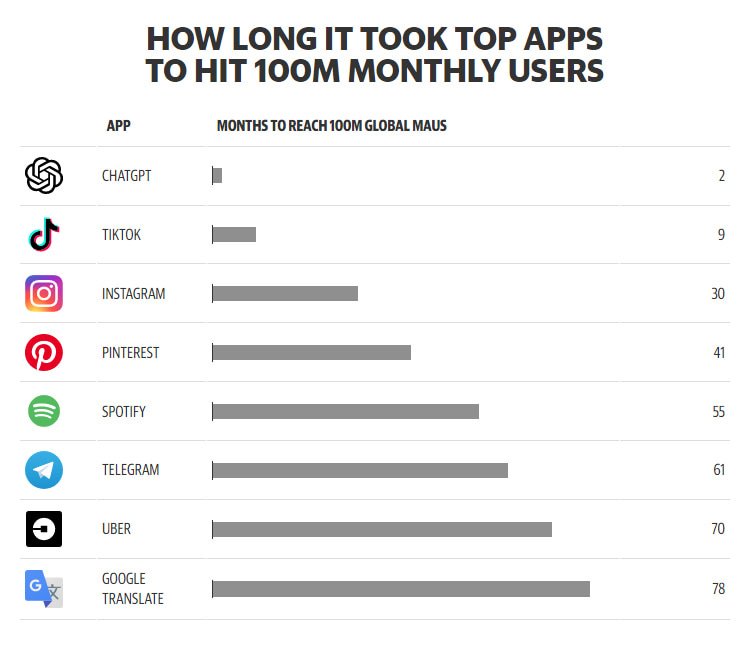Scale. Speed. Skill
Successful companies are adept at combining the power of scale, the leverage of skill and the swiftness of speed to win.
Technology companies like Apple and Samsung aided by their partners at places like Foxconn and TMCC continuously improve, iterate, and ship.
Many food and packaged goods behemoths are filled with highly skilled people who innovate and produce at huge scale and have significant clout with distribution and advertising channels.
This week we saw Jamie Dimon of JP Morgan Chase leverage his experience from the 2008 crash and his knowledge of the system with the scale of his bank and other leading banks to attempt to stabilize First Republic bank. These were huge organizations whose CEO’s moved rapidly proving that elephants can dance fast and quick if they need to under skilled leadership.
The challenge for successful organizations moving forward is not they do not have scale, skill, or speed but rather what happens as a new world emerges where the benefits of scale diminish, when new skills become critical but the ability to hire the newly skilled with the old incentives are reduced, and the speed of the world outstrips the speed of the organization.
Scale
In the past three years in the US all the net new jobs have been created by companies with fewer than 250 employees.
Modern technology including GPT4, influencer and social media and the explosion of marketplaces from AWS to Shopify to Upwork to manufacturing and fabrication on demand by scaled foundries allow individuals and small companies to scale quickly with very limited resources.
These new platforms, technologies and marketplaces are significantly reducing the benefits of some types of scale and many types of expertise.
Today the scale of manufacturing, communication spending, resources and people are being augmented by a new scale of network, data, influence, and talent/ideas.
The Mr Beast’s, D’Amelio sisters and Kardashian sisters leverage the new eco-system to scale their talent without having to become big as companies.
A new form of media company built around world class talent whose bylines are featured as prominently as their publications logo combined with simple and low cost/no cost distribution such as email has made Axios, Puck and now Semafor influential and impactful with dozens versus hundreds or thousands of employees.
Scale! is a short piece on how scale is changing and what leaders and companies can do to scale their companies but themselves.
Not only can individuals now work at the scale of companies by upskilling, unleashing their talent, scaling through their teams, and building reputations as stellar as big firms but large companies now need to re-configure around talent rather than believing talent will cluster around companies.
The shift of power from big to small, management to talent, and from the towers of power to the talent with wrenches in the trenches has only just begun.
Skill
Every advance in technology places a premium on skilled ability.
Chat GPT, Runway ML, DALL·E 2, are modern paints and new canvases but in the hands of skilled painter (who has learned the new brush strokes necessary to unleash the potential of these tools) they can be far more magical than that of a lesser talent.
Ironically some of the skills in highest demand such as coding may become less scarce as the machine writes code, while the “softer” skills of creativity, curiosity, imagination, story telling and innovation which now will easily have all the facts, figures and charts at their disposal can connect dots in new ways by standing on the shoulders of machines to create new worlds and ways to wealth.
The demo of Microsoft’s Co-pilot which gives a glimpse of how AI will be weaved into the fabric of everything enabling individuals to have superpowers.
In today’s fast-moving environment, the half-life of skills decays much more quickly and unless one is continuously learning, enhancing capabilities, and upgrading talent a firm can suddenly find itself with herds of people skilled in yesterday’s tongue when the world is speaking a new language.
Today with 62% of Gen-Z having a side-hustle, free-lancers about to overtake full time workers and unbundled and distributed work offering a plethora of possibilities, large companies must re-invent themselves in every way to attract and retain talent.
Human resources, people development and talent leaders will become even more strategic to the fabric of the future company. Sadly, in the most recent round of layoffs many companies blew up their talent teams since they no longer were in “recruiting” mode.
Talent will matter more builds the case as to why talent will grow more and not less important in an AI and modern world of technology as we incorporate technology and re-design organizations around the best of people and machines.
Speed
It took nearly two weeks for Washington Mutual to fail.
It took less than two days for SVB to fail.
It took Instagram 2.5 years to reach 100 million users.
It took Tik Tok 9 months to do the same.
It took ChatGPT 2 months.
Moore’s law saw processing power double every 18 months. In the world of machine learning and large language models the rate of doubling or even tripling is less than six months.
Fueled by software, social media, and a twitchy and connected world everything is accelerating at a speed which is leaving most organizations feel tortoise like.
In a world of espresso too many companies are going through the rituals and machinations of high tea.
We should all evaluate how much of our time do we spend working on output and how much time in meetings, check-ins, sign-offs, all-hands, temperature checks and other group gropes where we gather like herds around PowerPoint slides.
Quality control, risk management and inclusive viewpoints require a process that for good reasons slow down production or delivery while enhancing the eventual output and are essential.
But too many companies may still be following processes for another age with too many people and too many check-ins. A study by Bain indicated that any project moves forward in an organization less than 5 percent of the time and is waiting for the next sign off or is on hold the rest of the time.
When the benefits of scale are reduced the lack of speed now becomes a bug rather than a feature of a large company.
Feedback, Re-Thinking Presentations, and Fewer reveal how large companies can move faster by actually providing feedback versus check-ins, curtailing long dog and pony presentations that wind their way through time and limiting the number of people involved in a project.
Implications.
Every leader, every company and every individual must determine how best to hone skill, create new scale and determine where and what to speed up. Some approaches to consider:
New Strategies: Many moats like scale will soon become prison walls unless companies learn to break free from their containers and mindsets of the past. Think different. Do different.
Outside perspectives critical: Management and Boards need to look outside and below versus at people like themselves or upward. By the time stuff gets to Davos it’s too late and often the opposite of what is actually going on. The future does not only come from the heavens and a cabal of insiders but from the slime and outsiders.
Scale is not bad but needs to be leveraged differently: Being scaled does not mean one cannot move at speed and build new skill sets. Just look at Microsoft over the past five years. Or how the New York Times has re-invented itself for a new world.
Openness is the key: A mindset open to partnering which allows for speed and agility in incorporating new skill sets is important. An outlook open to other points of view when the future can come from anywhere and most importantly open to continuous learning in a world of change.



